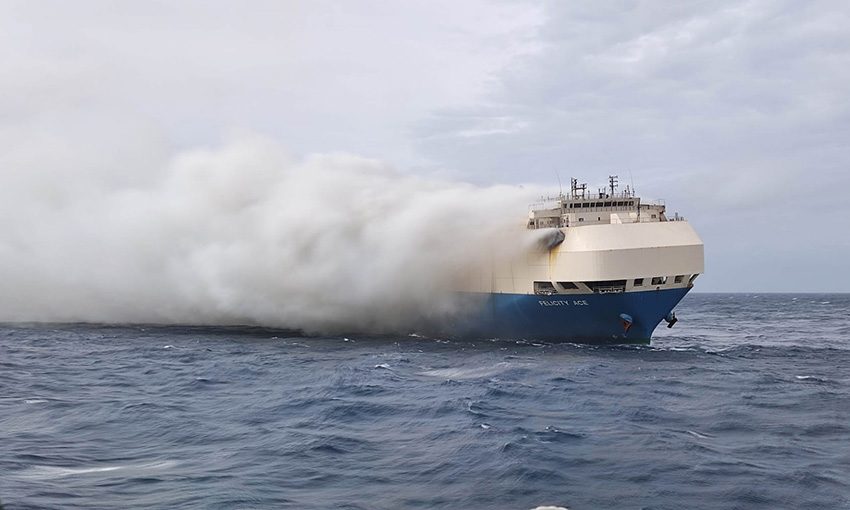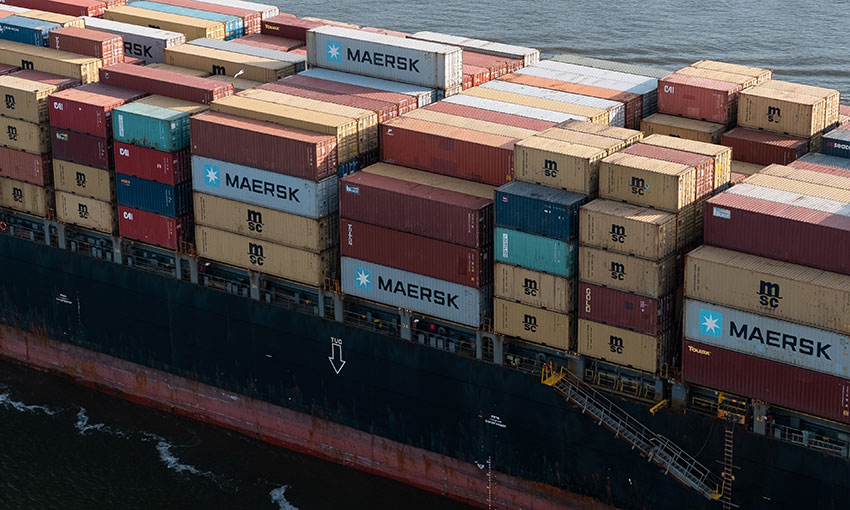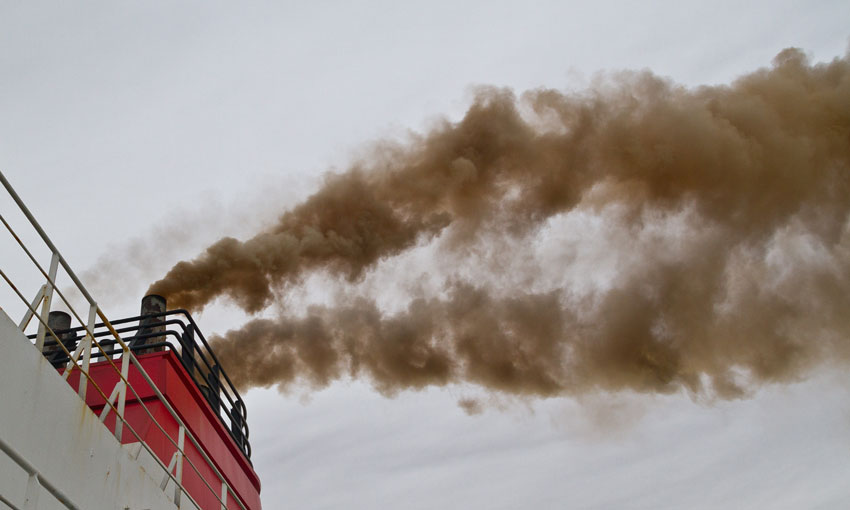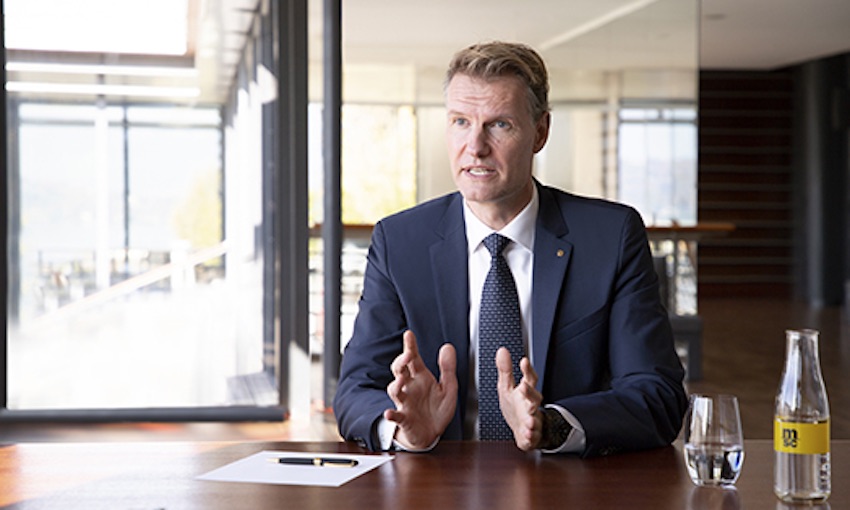LARGER vessels, crew shortages, port congestion, challenging decarbonisation targets and the war in Ukraine allow no room for complacency in shipping, according to marine insurer Allianz Global Corporate & Specialty.
AGCS’s 2022 Safety and Shipping Review analysed shipping losses and casualties and outlined the major issues adding pressure to the global maritime industry.
Captain Rahul Khanna, global head of marine risk consulting at AGCS, said total losses are at a record low. There have been around 50 to 75 losses each year over the past four years, compared with more than 200 each year in the 1990s.
“However, the tragic situation in Ukraine has caused widespread disruption in the Black Sea and elsewhere, exacerbating ongoing supply chain, port congestion, and crew crisis issues caused by the COVID-19 pandemic,” he said.
“At the same time, some of the industry’s responses to the shipping boom, such as changing the use of, or extending the working life of, vessels also raise warning flags.
“Meanwhile, the increasing number of problems posed by large vessels, such as fires, groundings and complex salvage operations, continue to challenge ship owners and their crews.”
Ukraine conflict
AGCS noted the shipping industry had been impacted on multiple fronts by Russia’s invasion of Ukraine, namely through the loss of life and vessels in the Black Sea, trade disruptions and the growing burden of sanctions.
The industry is also experiencing knock-on effects for crew, the cost and availability of bunker fuel and emerging cyber risks.
Justus Heinrich, global product leader, marine hull, at AGCS said the insurance industry is likely to see claims under specialist war policies from vessels damaged or lost to sea mines, rocket attacks and bombings in conflict zones.
“Insurers may also receive claims under marine war policies from vessels and cargo blocked or trapped in Ukrainian ports and coastal waters,” he said.
AGCS emphasised ramifications in terms of seafarer shortages, Russian and Ukrainian seafarers account for around 10% and 4% of the global seafaring workforce respectively. These seafarers may struggle to return home or re-join ships at the end of their contracts.
A prolonged conflict is also likely to reshape global trade in energy and commodities according to AGCS, in terms of, for example, rising bunker fuel costs and limited availability.
Fires on board
Cargo fires were a significant issue for the industry over the past year, in particular fires onboard ro-ro vessel Felicity Ace and containership X-Press Pearl.
AGCS said fires often start in containers, which can be the result of mis-declaration or non-declaration of hazardous cargo. It said around 5% of containers shipped may consist of undeclared dangerous goods.
Ro-ro vessels are also experiencing greater losses due to fires caused by malfunctions or short circuits in vehicles. The growing number of electric vehicles transported by sea presents further challenges.
AGCS noted container ships have had difficulty finding a “safe haven” during emergencies at sea. For example, X-Press Pearl was refused by two ports following a fire, as the ports were unable or unwilling to discharge a leaking cargo of nitric acid.
“Too often, what should be a manageable incident on a large vessel can end in a total loss,” Mr Khanna said.
“Salvage is a growing concern,” he said. “Environmental concerns are contributing to rising salvage and wreck removal costs as ship owners and insurers are expected to go the extra mile to protect the environment and local economies.
“Previously, a wreck might have been left in-situ if it posed no danger to navigation. Now, authorities want wrecks removed and the marine environment restored, irrespective of cost.”
A post-pandemic world
AGCS said the pandemic’s impact on seafarer welfare and the boom in shipping and port congestion is a potential safety concern.
It said demand for crew is high, but many skilled and experienced seafarers are leaving the industry, and a serious shortfall of officers is predicted within five years.
“For those who remain, morale is low as commercial pressures, compliance duties and workloads are running high,” AGCS said in a report statement.
“Such a work situation is prone to mistakes – 75% of shipping incidents involve human error.”
The economic rebound from COVID-19 lockdowns has resulted in record increases in charter and freight rates for shipping, and with high demand, some owners are extending the working life of vessels.
AGCS analysis suggests older container and cargo vessels of between 15 and 25 years old are more likely to result in claims as they suffer from corrosion, while systems and machinery are more likely to break down.
Congestion and climate transitions
COVID-19 measures in China, a surge in consumer demand and the Ukraine invasion have all been factors in unprecedented port congestion, according to the report.
AGCS said the congestion and bottlenecks have puts crews, port handlers and facilities under additional pressure.
“Loading and unloading vessels is a particularly risky operation, where small mistakes can have big consequences,” Mr Heinrich said.
“Busy container ports have little space, while the experienced labour required to handle the containers properly is in short supply. Add in fast turnaround times and this may result in a heightened risk environment.”
Further to the challenge of congestion, the shipping industry is also under pressure to accelerate its sustainability efforts, particularly with momentum behind international efforts to tackle climate change.
AGCS said decarbonisation will require big investments in green technology and alternative fuels, and that a growing number of vessels are already switching to LNG while other alternative fuels are being developed.
The insurer said the transition to alternative fuels will likely bring heightened risk of machinery breakdown claims, among other risks, as new technology beds down and as crews adapt to new procedures.





